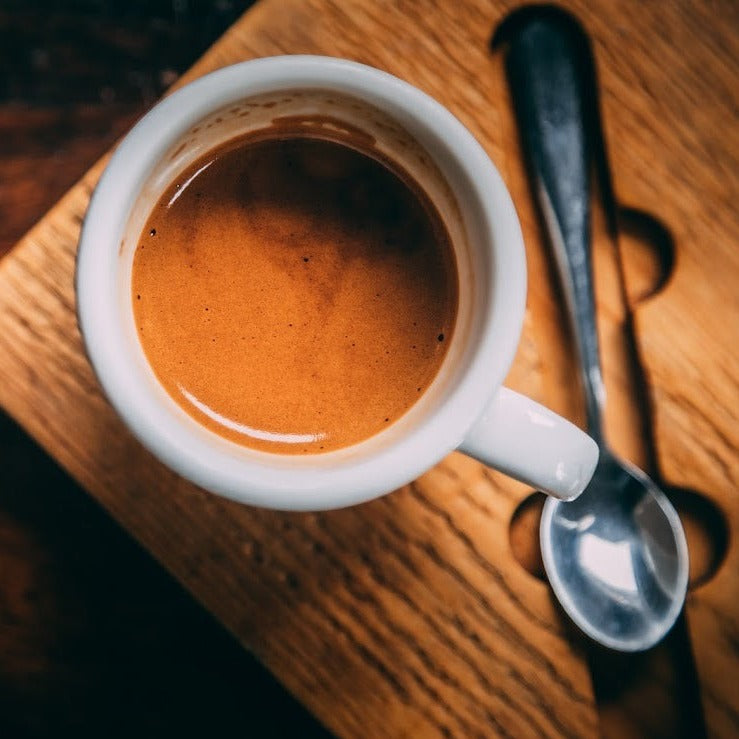Why Brew Lovers Prefer SOE Single Origin Espresso for Purity
Why Brew Lovers Prefer SOE Single Origin Espresso for Purity
Blog Article
Coffee Beans Uncovered: Discovering the Secrets of Espresso and Blended Coffee Beans
When you believe regarding coffee, what comes to mind? Is it the abundant scent of coffee or the complexity of a well-crafted blend? Recognizing the subtleties of coffee beans can transform your experience.
The Beginnings of Coffee: A Historical Perspective
Although espresso is currently a staple in coffee society worldwide, its beginnings trace back to the early 20th century in Italy. You could be surprised to find out that the invention of coffee was driven by a wish for speed and performance. In 1901, Luigi Bezzera patented the initial coffee device, intending to brew coffee faster than traditional approaches. This technology promptly caught the attention of Italian coffee enthusiasts, causing the espresso bars we are acquainted with today.
Recognizing Espresso Beans: Varieties and Features
When you consider espresso, it's necessary to acknowledge the various bean ranges and their unique tastes. Each kind brings an unique character to your mug, influenced by elements like roast degrees. Understanding these aspects can elevate your coffee experience considerably.
Coffee Bean Varieties
As you explore the globe of espresso, you'll swiftly discover that not all beans are developed equal; each variety brings its own special tastes and features to your mug. Arabica beans are recognized for their smooth, nuanced tastes and reduced high levels of caffeine material, making them a preferred among coffee lovers. Each range provides something different, so trying out will assist you find your ideal espresso.
Flavor Profiles Discussed
Comprehending the flavor profiles of different espresso beans can raise your coffee experience. Each bean selection provides unique characteristics that influence fragrance, preference, and mouthfeel. Arabica beans usually provide a sweeter, extra complex flavor with tips of fruit and flower notes, while Robusta beans often tend to be bolder, with natural and nutty touches.
When you check out single-origin beans, you might uncover unique regional tastes-- Central American beans may be citrusy and intense, whereas Italian blends frequently deliver abundant, chocolatey notes.
Roast Levels Influence
Roast degrees play a necessary role in forming the taste and scent of coffee beans, influencing your total coffee experience. Understanding these roast levels assists you pick the coffee that matches your taste preferences. Experimenting with different roasts can lead to wonderful explorations, enhancing your gratitude for coffee.
The Art of Mixing: What Makes Blended Coffee Unique
What makes blended coffee so interesting? It's everything about the art of integrating beans from various beginnings, roast degrees, and flavor profiles. You're not simply blending; you're producing an unified equilibrium that highlights the staminas of each bean when you blend. You can explore numerous mixes to improve sweetness, body, and acidity, leading to a brew that's richer and more complex than a single-origin coffee.
And also, mixing can assist maintain uniformity, supplying a dependable flavor experience regardless of seasonal variants in beans. Whether you're a home or a barista maker, grasping the art of mixing opens up a globe of imagination and taste possibilities, making your coffee experience truly one-of-a-kind.
Taste Profiles: Tasting Notes of Coffee vs. Blended Coffee
Combined coffee offers a globe of flavor opportunities, but when it involves espresso, you're looking at a more concentrated experience. Espresso commonly showcases bold, abundant tastes with a thicker mouthfeel. You may discover notes of dark delicious chocolate, sugar, and even tips of fruit, depending on the beans. The intensity can be both revitalizing and pleasing.
On the other hand, blended coffee provides a complicated tapestry of tastes. You can discover a range of sampling notes, from nutty and pleasant to flower and fruity. Each mix can offer something unique, often incorporating beans from various regions to develop a balanced account.
While coffee delivers a strike, mixed coffee invites you to appreciate the nuances. Whether you like the durable toughness of coffee or the detailed flavors of blended coffee, each mug tells its very own story, waiting for you to find.
Brewing Techniques: Improving Your Espresso Shot
To accomplish the best espresso shot, recognizing the developing methods is vital, as even small modifications can substantially influence the flavor and top quality. Beginning by utilizing fresh, top quality coffee beans; grind them prior to brewing for optimum flavor. Go for a great grind, about the consistency of salt, to guarantee perfect removal.
Following, take notice of your water temperature; it ought to be in between 195 ° F to 205 ° F. Too warm or also cold can wreck your shot. Use about 18-20 grams of coffee for a dual shot, and tamp it evenly with strong stress to produce an uniform puck.
Ultimately, control your removal time; aim for 25-30 secs. A longer removal can lead to bitterness, while also short can result in sour flavors. Exercise these techniques consistently, and you'll refine your skills, achieving that abundant, full-bodied coffee shot you crave. Take pleasure in the trip!
The Role of Roast Levels in Espresso and Blended Coffee
After understanding the developing strategies for coffee, it's time to consider exactly how roast degrees influence the flavor profile of your coffee. The roast level can significantly modify your coffee's preference, aroma, and body. Light roasts have a tendency to highlight the coffee's origin, using intense level of acidity and fruity notes, while tool roasts equilibrium level of acidity and sweetness, creating a well-shaped taste. Dark roasts, on the other hand, draw out this strong, abundant flavors with lower acidity, commonly generating delicious chocolate or great smoky touches.

Checking Out Sustainability: Ethical Sourcing of Coffee Beans
When you pick coffee, you're not just selecting a flavor; you're choosing regarding the impact on farmers and the setting. Understanding Fair Profession practices, natural farming methods, and qualification requirements can help you sustain sustainable coffee sourcing. Allow's explore just how these aspects contribute to a much more ethical coffee experience.
Fair Trade Practices
Fair Profession practices play a vital function in making certain that coffee beans are sourced morally and sustainably. When you pick Fair Profession coffee, you support farmers who receive fair salaries and work in risk-free problems. By choosing for Fair Profession brand names, you're not just delighting in a rich cup of coffee; you're making a positive effect on the lives of those who grow it.
Chemical-free Farming Approaches
As you explore the globe of ethical coffee sourcing, natural farming methods arise as a necessary part of sustainability. Furthermore, it typically leads to more powerful, healthier coffee plants, resulting in richer tastes in your cup. When you decide for organic coffee, you're making an aware choice that profits both the earth and your taste buds.
Qualification Requirements Explained
Comprehending qualification standards is essential for any individual interested in fairly sourced coffee. These criteria, such as Fair Trade, Rain Forest Alliance, and USDA Organic, warranty that coffee is grown under sustainable methods. You sustain farmers who adhere to moral labor practices and ecological security. when you pick certified coffee.
Fair Trade certification focuses on giving fair incomes and working conditions, while Rainforest Partnership stresses biodiversity and ecosystem conservation. Next time you're at your regional café or grocery store, you can try here look for these tags, and feel excellent recognizing your coffee acquisition favorably influences neighborhoods and the environment.
Regularly Asked Inquiries


Exactly How Does Elevation Influence the Growth of Coffee Beans?
Altitude influences coffee bean growth by affecting temperature level and environment. Higher altitudes frequently produce denser beans with even more facility flavors, while reduced elevations can cause faster development however less savory outcomes. You'll taste the distinction!
What's the Difference Between Arabica and Robusta Beans?
Arabica beans are sweeter and much more intricate, while Robusta beans have a more powerful, harsher flavor with higher caffeine web content. You'll discover Arabica liked for specialized coffees, whereas Robusta's commonly used in instantaneous coffee and espresso blends.
Can Coffee Beans Spoil or Lose Taste Over Time?
Yes, coffee beans can go negative and lose flavor in time. They'll become stale if you keep them improperly or maintain them as well long. Constantly keep your beans in a closed container away from light and moisture.
What Are the Health Benefits of Alcohol Consumption Coffee?
Consuming alcohol espresso boosts your energy, enhances mental clearness, and may reduce the danger of particular illness. It's rich in antioxidants, sustains metabolic process, and can enhance mood, making it a valuable selection for your everyday regimen.
Exactly How Does Water Quality Influence Coffee Removal?
Water top quality greatly impacts espresso extraction. It affects the solubility of tastes and oils, influencing preference and aroma. Utilizing filtered water can boost your espresso, making certain a satisfying and well balanced mug every time you brew.
Coffee Beans Uncovered: Finding the Keys of Coffee and Blended Coffee Beans.
Recognizing the flavor profiles of different coffee beans can raise your coffee experience.Roast levels play a crucial function in shaping the flavor and aroma of espresso beans, affecting your total coffee experience (SOE).Combined coffee supplies a globe of taste opportunities, yet when it comes to espresso, you're looking at a more focused experience.After mastering the brewing techniques for espresso, it's time to ponder exactly how roast levels influence the flavor account of your coffee
Report this page